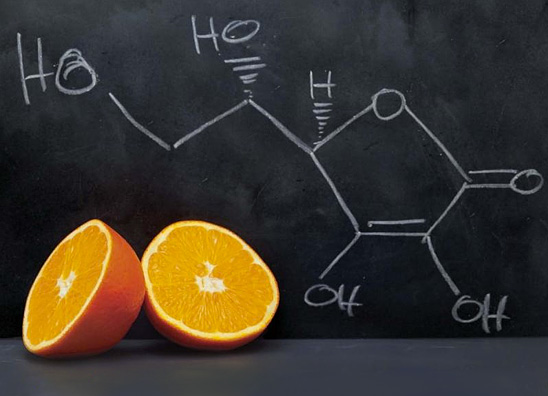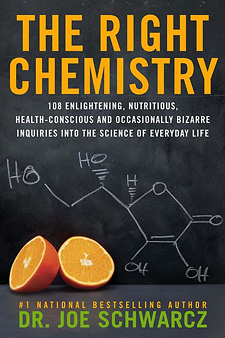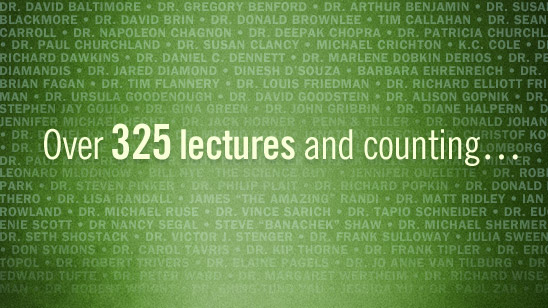In this week’s eSkeptic:


Intelligence and The Future
SKEPTICALITY EPISODE 202
This week on Skepticality, Derek sits down with Nicholas Eftimiades, Chinese Intelligence expert who was the Chief of the Defense Intelligence Agency Space Division for a period of time. He recently penned a book called Edward of Planet Earth—a science fiction novel set 200 years in the future in which a few androids decide to communicate with the Almighty.
Get the Skepticality App
Get the Skepticality App — the Official Podcast App of Skeptic Magazine and the Skeptics Society, so you can enjoy your science fix and engaging interviews on the go! Available for Android, iPhone, iPad, and iPod Touch. Skepticality was the 2007 Parsec Award winner for Best “Speculative Fiction News” Podcast.
About this week’s eSkeptic
What is the primary use of bird nests in China? Why didn’t the Lone Ranger’s silver bullets tarnish? Why do crystals of Epsom salts crumble if you yell at them? Should you put broccoli on pizza before or after baking? Why should you avoid grapefruit if you’re on certain medications? Does red yeast rice really lower cholesterol? In this week’s eSkeptic, Harriet Hall, MD, (aka “The SkepDoc”) reviews Joe Schwarcz book entitled, The Right Chemistry: 108 Enlightening, Nutritious, Health-Conscious and Occasionally Bizarre Inquiries into the Science of Everyday Life (Doubleday Canada, 2012, ISBN 9780385671590). Read Harriet Hall’s full bio at the end of this review.
The Carl Sagan of Chemistry
by Harriet Hall, MD, “The SkepDoc”
The Right Chemistry is many things. It is a column in the Montreal Gazette, a radio show on CJAD in Montreal, a blog, a podcast, and now it’s a book: The Right Chemistry: 108 Enlightening, Nutritious, Health-Conscious and Occasionally Bizarre Inquiries into the Science of Everyday Life , by Joe Schwarcz. Known as “Dr. Joe,” Schwarcz is a chemistry professor at McGill University in Montreal and the director of that university’s Office for Science and Society. He is the Carl Sagan of chemistry, explaining it to the public and demonstrating its wonders.
When most people hear the word “chemical” they hear “bad stuff.” Chemicals are associated with nasty manmade hazards to human health—stealth invaders that contaminate our food and our environment. They are to be avoided or counteracted with various “detox” schemes dreamed up by proponents of so-called complementary and alternative medicine.
That’s the Wrong Chemistry. As Dr. Joe explains, there are no safe or dangerous chemicals, only safe and dangerous ways to use them. Even deadly poisons have found medical applications and have illuminated our understanding of physiologic processes. Everything is a chemical. Chemicals make up the entire world, and we are made of chemicals manufactured by our own bodies. Virtually everything in life comes down to chemical phenomena, so the better we understand chemistry the better equipped we are to make rational decisions. And as Dr. Joe demonstrates in spades, “Chemicals are interesting!”
Schwarcz shares his encyclopedic knowledge of obscure facts. Did you know asparagus can grow up to 10 inches a day? Have you heard of kangatarians? They are environmentalists who eat meat, but only kangaroo meat. Australian aborigines use the roo for food, clothing, and some tribes even use a stuffed kangaroo scrotum as a ball for a traditional game of marngrook. The Chinese used to make their gunpowder from bat poop. An employee of a company that made dental amalgam brought some home and tried to extract the mercury in his basement lab; 4 family members died of mercury poisoning and the house had to be demolished and the debris treated as hazardous waste.
In WWII the U.S. military developed a mixture called “Who Me?” that smelled like feces and was dispensed with an atomizer. French Resistance fighters were supposed to surreptitiously spray it on German officers to embarrass them, but it wasn’t a great success since the sprayer ended up as stinky as the sprayee.
Where on earth does Schwarcz dig up all this stuff? He is interested in everything. He covers subjects as varied as tempered glass, energy drinks, Molotov cocktails, Spanish fly, human magnets, AIDS quackery in Africa, Pimat (a worthless piece of fabric sold to restore the health of our aura), bad health advice from celebrities, poison dart frogs, cosmeceuticals, and spider webs in space.
He asks and answers a multitude of intriguing questions. What is the primary use of bird nests in China? (Did you answer bird’s nest soup? Wrong! The primary use is for birds to lay eggs in.) Why didn’t the Lone Ranger’s silver bullets tarnish? Why do crystals of Epsom salts crumble if you yell at them? Should you put broccoli on pizza before or after baking? Why should you avoid grapefruit if you’re on certain medications? Does red yeast rice really lower cholesterol? (Not any more. The active ingredient has been removed, and even when it was present it wasn’t a good alternative to prescription drugs.)
Frustrated by the hassles of post 9/11 air travel? Schwarcz has looked into the feasibility of making explosives on a plane with small amounts of liquids. He’s not giving details for obvious reasons, but he concludes that the next time you are asked if you have liquids or gels, you should be glad they’re asking.
What was yellow rain? In 1981 the U.S. accused the Soviet Union of biological warfare in Laos, Cambodia and Afghanistan in the form of a toxin from planes that left a yellow residue on plant leaves. This was later shown to be a natural phenomenon, harmless fecal matter deposited by local honeybees. But the accusation was never retracted.
Schwarcz uses these intriguing tidbits of trivia to address some of the main issues of interpreting scientific research. He revises the saying about “what happens in Vegas…” to “what happens in the lab may just stay in the lab.” Animal and test tube experiments may not translate to humans, and the way they are presented in the media is usually misleading. “Dig deep enough, and at some dose you can find some sort of risk with any chemical.”
And if you look hard enough you can find studies allegedly showing health benefits for pretty much everything. Saponins in soap nuts are claimed to help with migraines, inflammation, and infections; they also supposedly have contraceptive properties. Dr. Joe quips that they might work for birth control if held between the knees! The evidence for health benefits is unconvincing; better evidence supports using soap nuts as a natural, renewable, biodegradable detergent. Unfortunately, it doesn’t work nearly as well as commercial detergents.
We frequently hear warnings about levels of environmental chemicals detected in the body. With new technology, we can detect substances down to femto levels (ten to the power of negative 15). “At that level, we will find that everything is contaminated by everything else!” Baby bottles with bisphenol A (BPA) were banned because it was detected in the blood. It now appears that those measurements were flawed, possibly due to contamination in the lab. A rigorous study exposed subjects to high levels of BPA, took hourly blood samples for 24 hours, and sent them to two independent labs that took special precautions against contamination. They determined that BPA levels were below the detection capabilities of the most sophisticated instruments available. Questionable studies suggesting risk get lots of publicity, but we seldom hear about the more meticulous studies that failed to find any evidence of harm.
The Right Chemistry is a worthy addition to the series of similar books Dr. Joe has published. He has a gift for making science fascinating and fun. I love to read his columns because I always learn something, his style is entertaining, and his dry sense of humor always makes me laugh. To paraphrase Bill Nye the Science Guy, “Chemistry rules!” Pseudoscience can’t even begin to compete with the attractions of real science. ![]()
About the Author
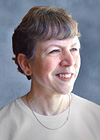
HARRIET HALL is a former U.S. Air Force flight surgeon and retired family physician. Today, she writes widely on the science and pseudoscience of health and medicine, contributing regularly to eSkeptic, the Skeptical Inquirer, and the blog site Science-Based Medicine. Her column “The Health Inspector” ran in O, The Oprah Magazine, and her “SkepDoc” column appears in every issue of Skeptic. She is a Fellow of the Committee for Skeptical Inquiry. The kind and practical voice expressed in her skeptical writing reflects the influence of her long, hands-on career in medicine. For Harriet, abstract philosophical issues mean less than the impact poorly-founded medical claims and beliefs can have on people’s lives. That human-centered approach has made her work as popular as it is valuable. Harriet followed the skeptical literature for years before the prevalence of medical pseudoscience prompted her to act. Encouraged by Michael Shermer and other skeptical activists to share her expertise with the public, Harriet has never looked back. “I don’t hope to change the minds of ‘true believers,’” Harriet says. “I only hope to make accurate science-based evaluations of questionable health practices available so that the skeptical and the undecided will have the information they need to make rational health decisions.”
Our Next Lecture at Caltech:
DR. MARC RAYMAN
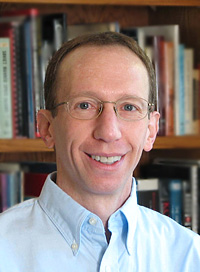
To Boldly Go…Well, You Know: NASA’s Dawn Mission to the Asteroid Belt
with Dr. Marc Rayman
Sunday, March 17, 2013 at 2 pm
THE AMBITIOUS DAWN MISSION, launched in September 2007, is one of NASA’s most remarkable ventures into the solar system. The spacecraft has recently completed a spectacular exploration of Vesta and is now traveling to Ceres; these were among the last uncharted worlds in the inner solar system prior to Dawn. They are the two most massive residents of the main asteroid belt. Ceres is so large that it is included in the category of dwarf planets, along with Pluto. Remnants from the time that planets were formed, Ceres and Vesta hold clues that will help scientists understand the dawn of the solar system. Dawn orbited Vesta from July 2011 to September 2012 and returned astonishing views of this fascinating world. It is the only spacecraft ever to orbit an object in the asteroid belt. Such a mission would be impossible without the use of ion propulsion, a technology that has mostly been in the domain of science fiction, but which was tested extensively on the Deep Space 1 mission, paving the way for Dawn. Dr. Marc Rayman, Dawn’s Chief Engineer and Mission Director at JPL, will describe the Dawn mission and its use of ion propulsion as well as its two exotic destinations. He will also share the excitement and profundity of controlling a spacecraft in deep space.
Followed by…
- Give and Take: A Revolutionary Approach to Success
with Dr. Adam Grant
Sunday, April 28, 2013 at 2 pm - Odd Couples: Extraordinary Differences between the Sexes
in the Animal Kingdom
with Dr. Daphne J. Fairbairn
Sunday, May 19, 2013 at 2 pm
New Admission Policy and Prices
Please note there are important policy and pricing changes for this season of lectures at Caltech. Please review these changes now.


